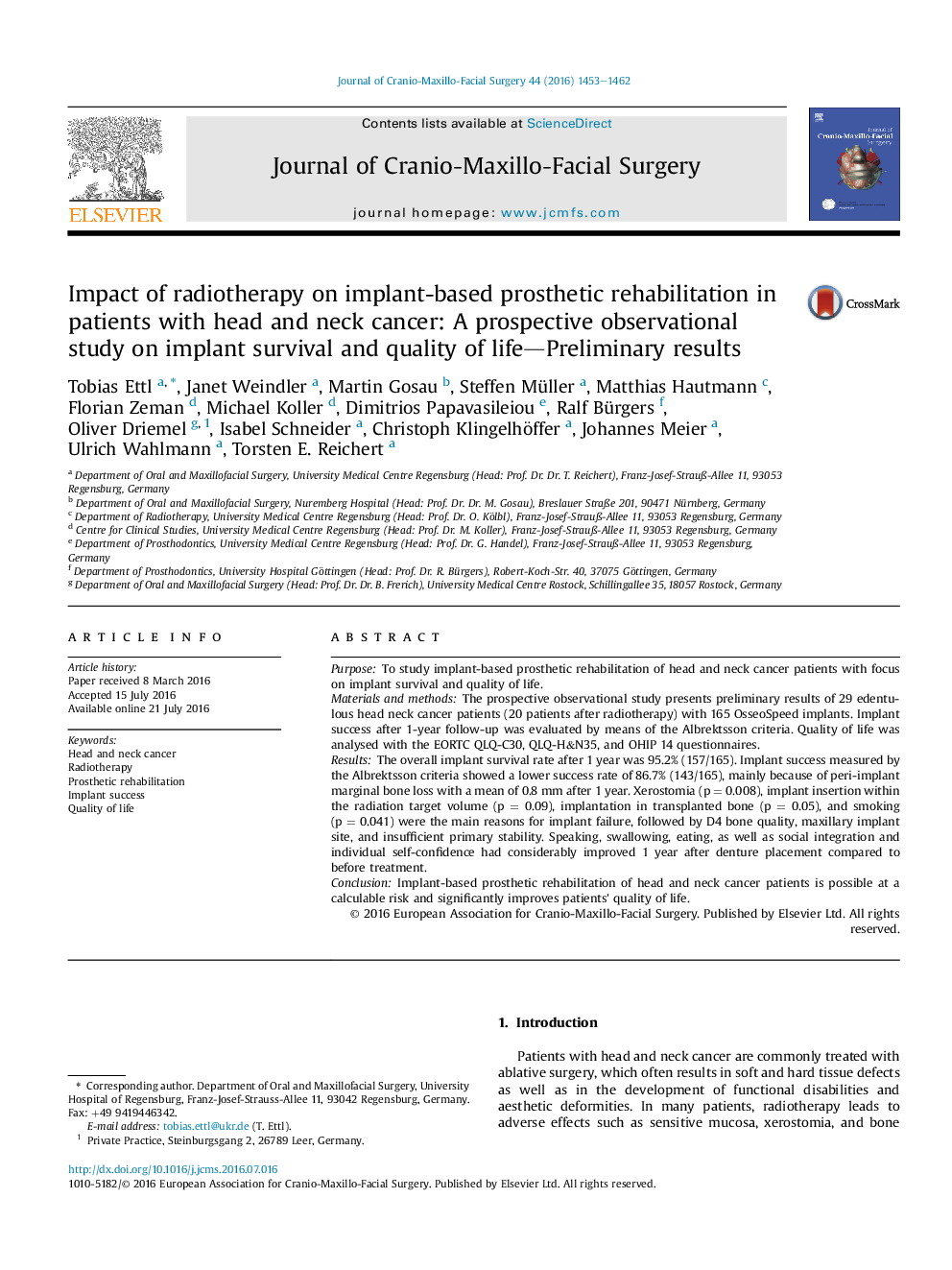| کد مقاله | کد نشریه | سال انتشار | مقاله انگلیسی | نسخه تمام متن |
|---|---|---|---|---|
| 3142019 | 1406811 | 2016 | 10 صفحه PDF | دانلود رایگان |
• The Albrektsson criteria of implant success as demanded for healthy patients are hardly feasible for irradiated tumour patients.
• Relation of the implant bed to the target volume of irradiation implies a major predictor of implant success.
• Smoking and xerostomia are major predictors for implant failure.
• Patient's functional and social quality of life is significantly improved.
PurposeTo study implant-based prosthetic rehabilitation of head and neck cancer patients with focus on implant survival and quality of life.Materials and methodsThe prospective observational study presents preliminary results of 29 edentulous head neck cancer patients (20 patients after radiotherapy) with 165 OsseoSpeed implants. Implant success after 1-year follow-up was evaluated by means of the Albrektsson criteria. Quality of life was analysed with the EORTC QLQ-C30, QLQ-H&N35, and OHIP 14 questionnaires.ResultsThe overall implant survival rate after 1 year was 95.2% (157/165). Implant success measured by the Albrektsson criteria showed a lower success rate of 86.7% (143/165), mainly because of peri-implant marginal bone loss with a mean of 0.8 mm after 1 year. Xerostomia (p = 0.008), implant insertion within the radiation target volume (p = 0.09), implantation in transplanted bone (p = 0.05), and smoking (p = 0.041) were the main reasons for implant failure, followed by D4 bone quality, maxillary implant site, and insufficient primary stability. Speaking, swallowing, eating, as well as social integration and individual self-confidence had considerably improved 1 year after denture placement compared to before treatment.ConclusionImplant-based prosthetic rehabilitation of head and neck cancer patients is possible at a calculable risk and significantly improves patients' quality of life.
Journal: Journal of Cranio-Maxillofacial Surgery - Volume 44, Issue 9, September 2016, Pages 1453–1462
